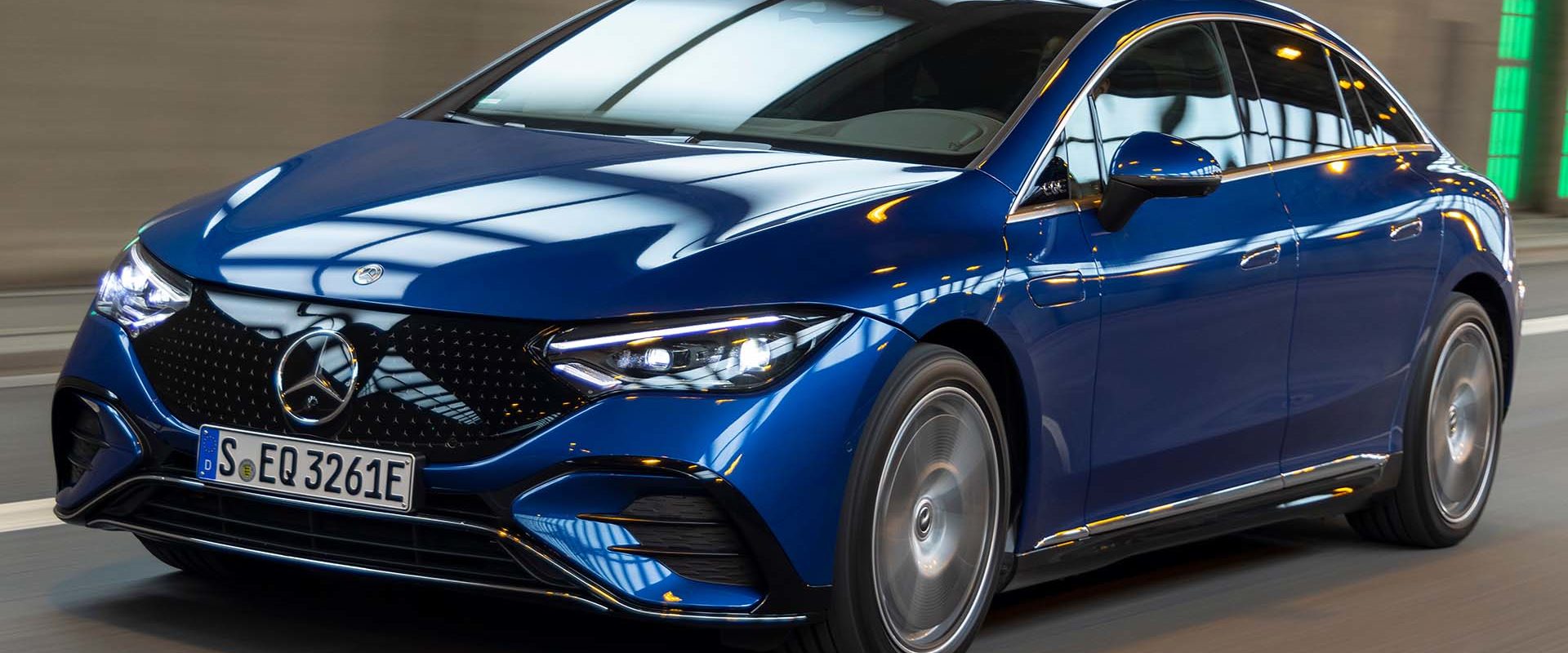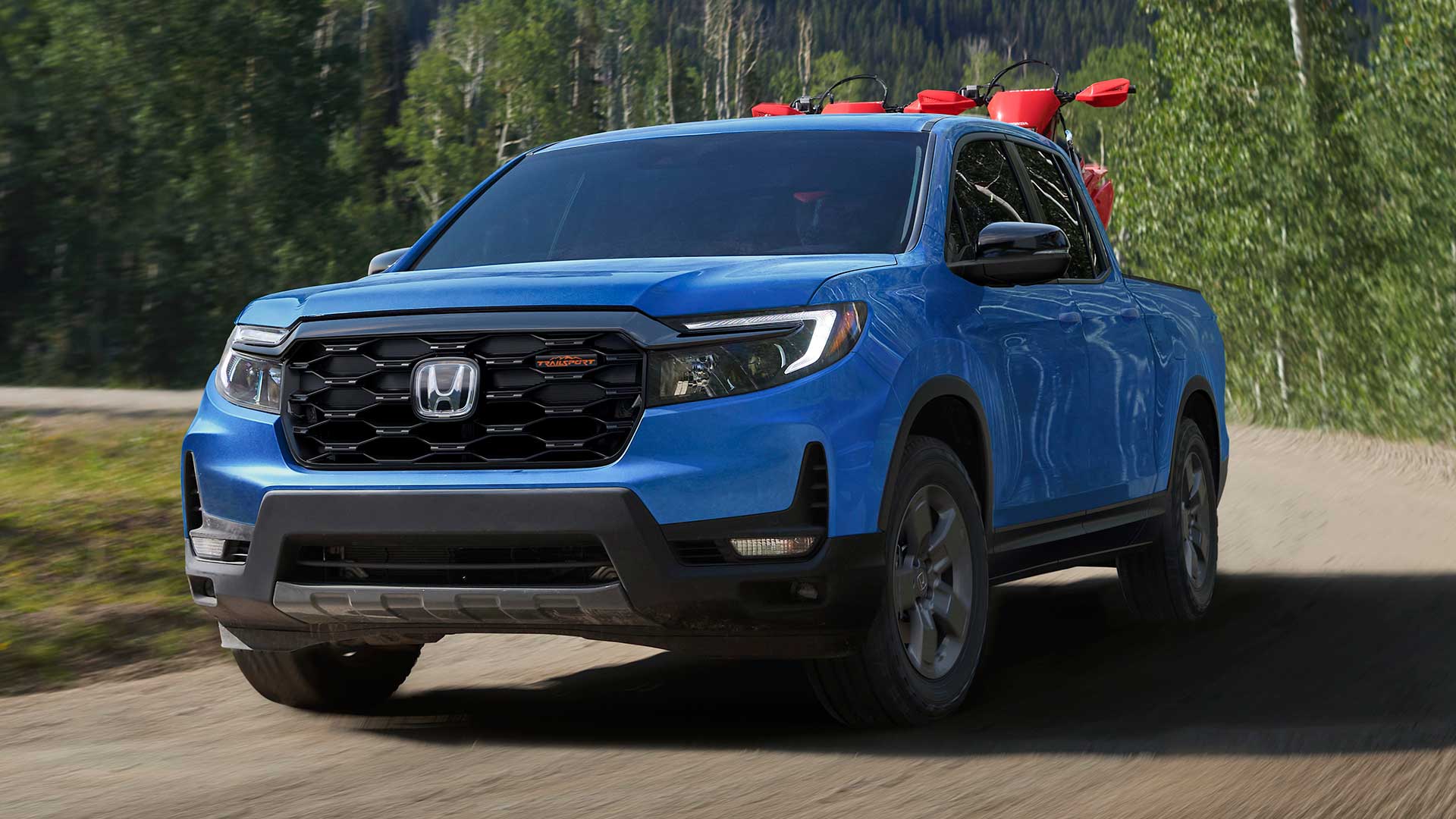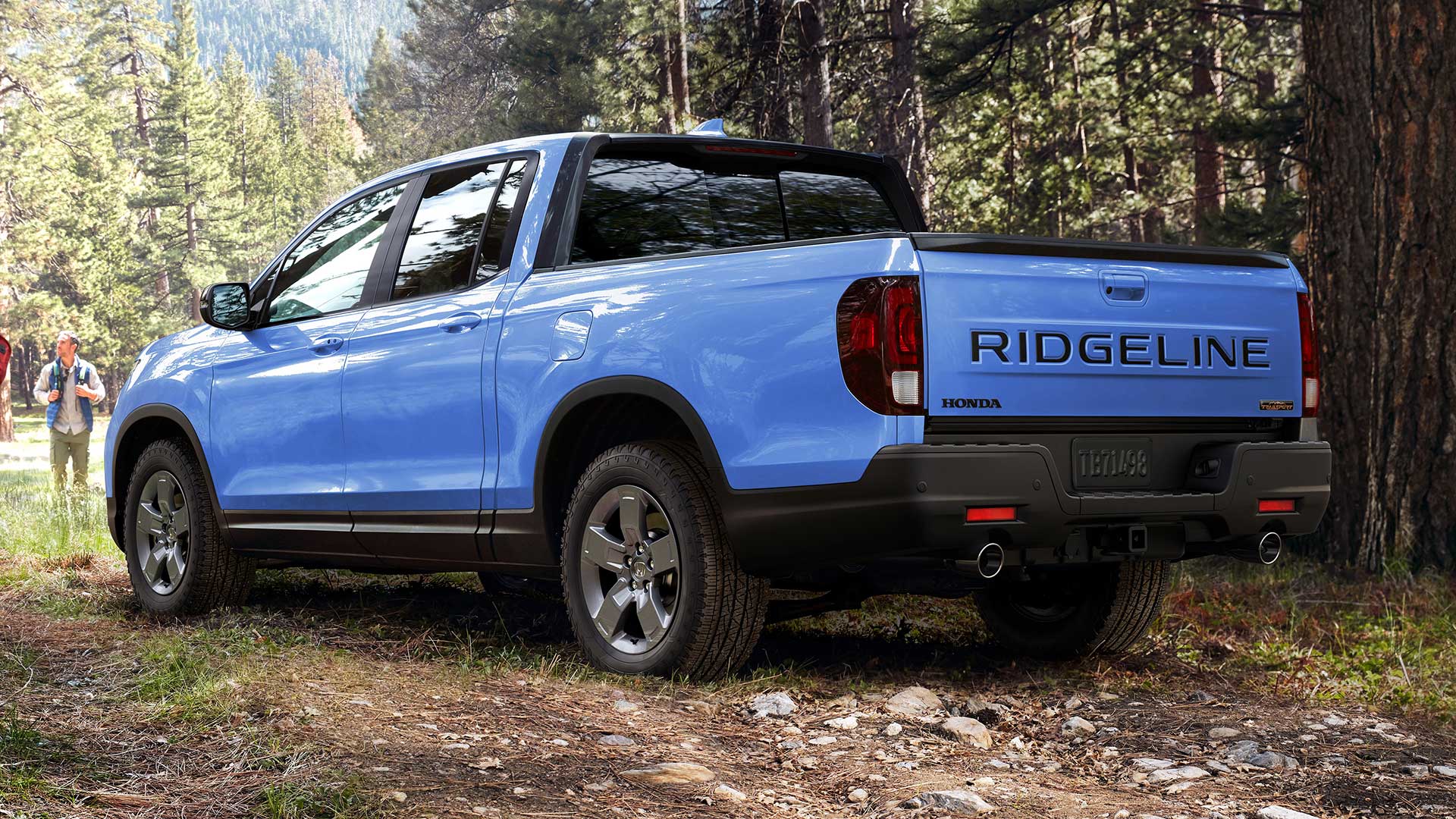2023 Mercedes-Benz EQE Sedan
Great Luxury Sedan, Better EV
Mercedes-Benzs launched their quickly expanding all-electric EQ sub-brand with the EQS sedan, arguably the first EV to come from an established brand that truly delivered the flagship luxury sedan experience. Well, it’s time now to determine if this midsize EQE sedan can deliver the same experience for the rest of us.
Making a fully electric luxury flagship sedan is easy when money is no object, and Mercedes sure created a great one with last year’s EQS. Bringing that excellence down to a lower price point is much more difficult; but Mercedes wasted no time undertaking it with this midsize 2023 Mercedes-EQE.
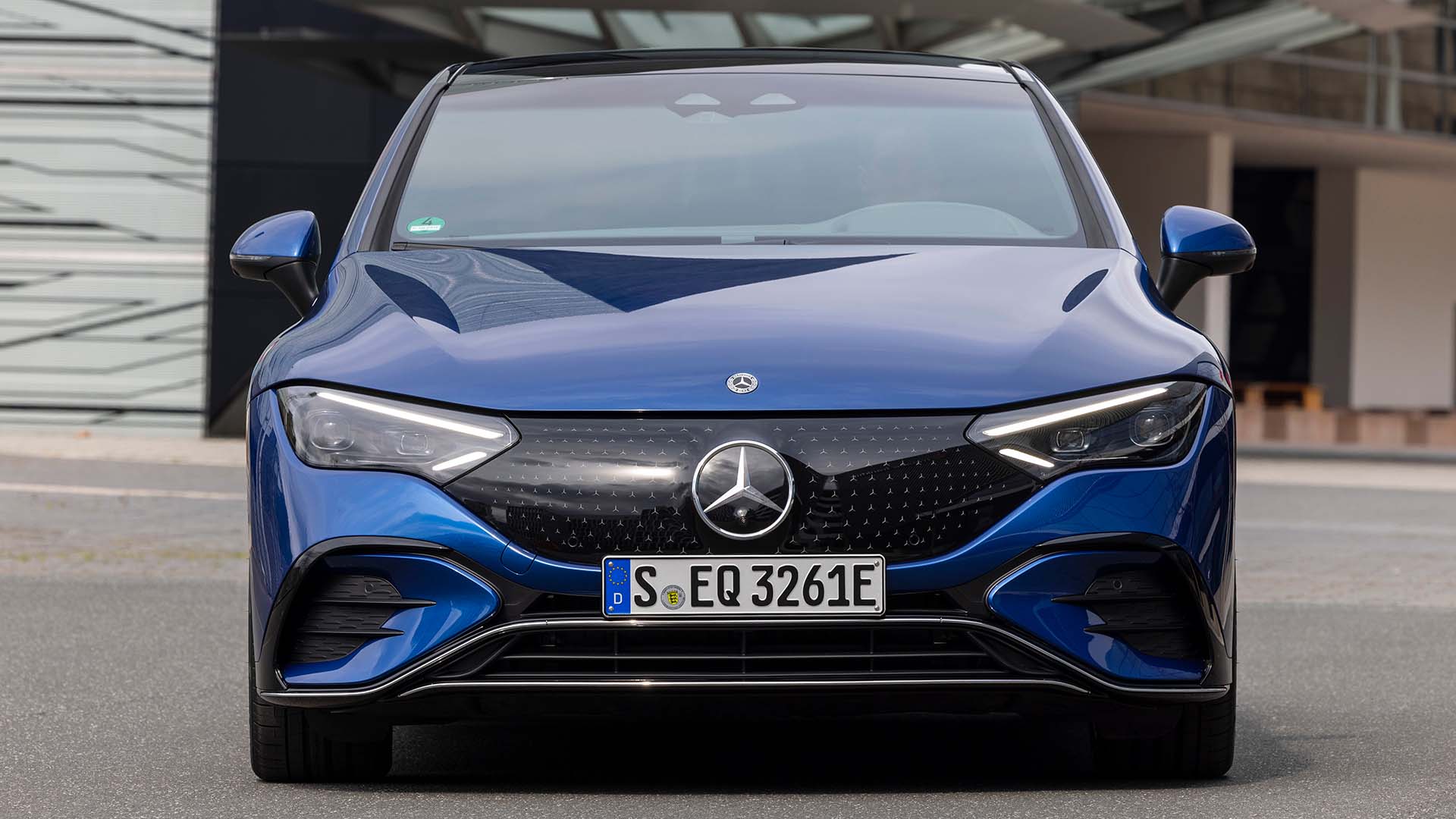 The interior is not quite to EQS levels of sophistication, but still glorious to look at and with all the ambient lighting, almost as high-tech feeling.
The interior is not quite to EQS levels of sophistication, but still glorious to look at and with all the ambient lighting, almost as high-tech feeling.
While the EQS’ wide Hyperscreen dash is available, a more traditional setup is standard with the central control panel housing a 12.8-inch OLED touchscreen, with a tablet style 12.3-inch digital instrument cluster mounted upright behind the steering wheel. The MBUX interface is similar and responds quickly, with most functions easy to find. Standard navigation with Electric Intelligence will plan the most efficient route, or one with charging stations if necessary.
Whether you stick with the standard MB-Tex upholstery or upgrade to real leather, the feel is luxurious throughout. Front seats are very comfortable, as are the rear seats with plenty of legroom. A large panoramic roof and a premium Burmester sound system are standard.
Regen braking has three levels right up to full 1-pedal driving, plus an auto setting which never seemed to give the feedback we were looking for. Overall, the EQE was very solid feeling on the road, behaving more like a typical Mercedes-Benz sedan than an electric car. The only detractor from the experience was a very thick sloping A-pillar which seemed to be in our line of sight more than we’d like.
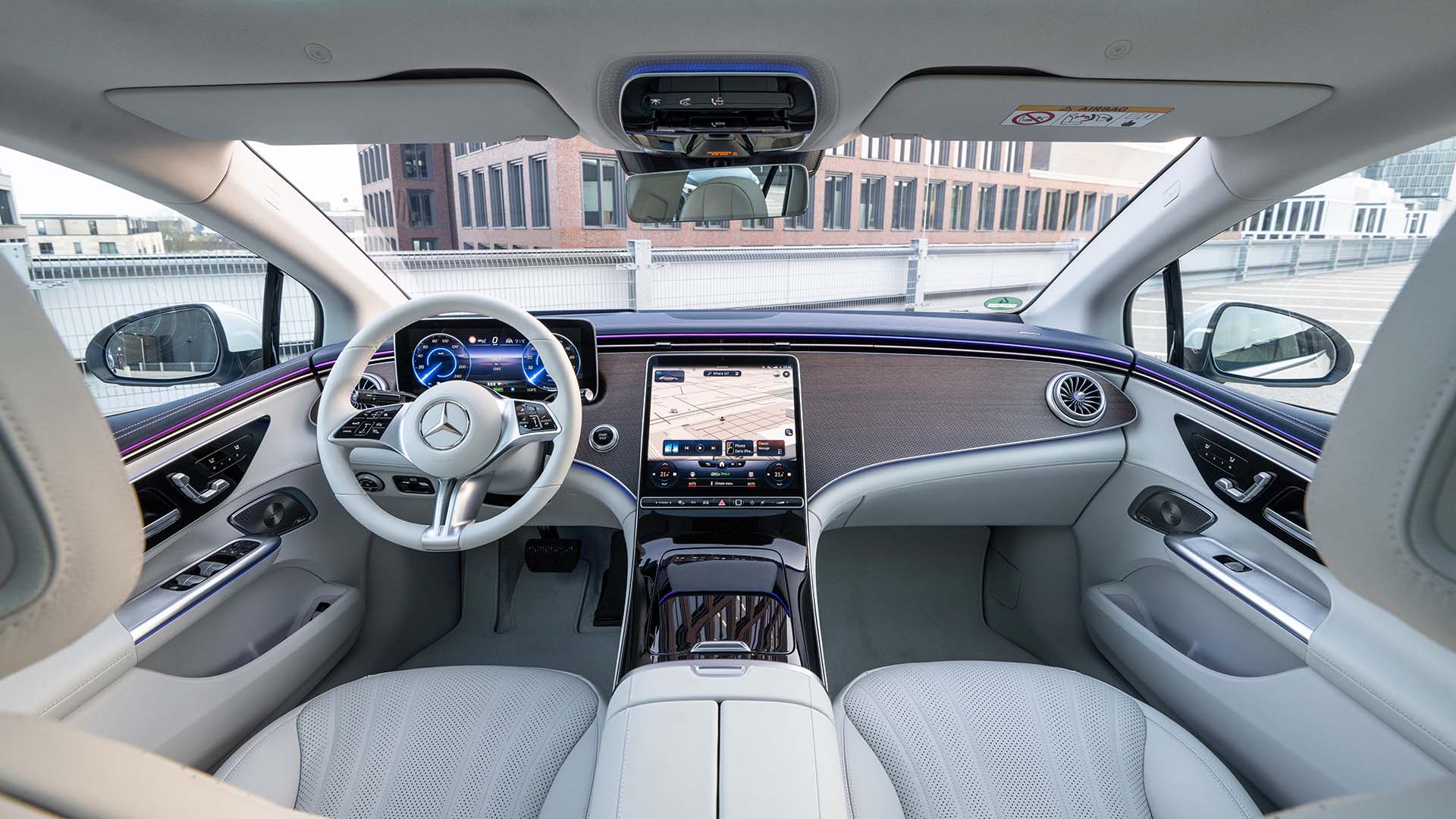 On to more specific powertrain details. A base 350+ features a single rear motor rated at 288-horsepower and 305-miles of range from a 90.6-kWh battery. An additional motor can be added up front for 4MATIC all-wheel drive both in 350 form, and this top of the line 500 4MATIC which cranks out 402-horsepower from 300kWs worth of dual-motors. No official range figure for the 500 yet, but our car indicated as many as 263-miles available, though based on our driving loop, around 220 seems much more realistic.
On to more specific powertrain details. A base 350+ features a single rear motor rated at 288-horsepower and 305-miles of range from a 90.6-kWh battery. An additional motor can be added up front for 4MATIC all-wheel drive both in 350 form, and this top of the line 500 4MATIC which cranks out 402-horsepower from 300kWs worth of dual-motors. No official range figure for the 500 yet, but our car indicated as many as 263-miles available, though based on our driving loop, around 220 seems much more realistic.
Off to Mason Dixon Dragway to see how that 400-plus horsepower translates to acceleration times.
While there was enough oomph off the line to press us back in the seat a bit, it felt mostly smooth for a somewhat soft launch. There are plenty of unique hyperdrive-like sounds to go along with the very quick 4.0-second trip to 60 miles-per-hour. According to Mercedes, torque delivery is checked 10,000-times per minute, distributing power to front and rear motors, according to traction, way faster than is possible with any mechanical system. Power stayed pretty consistent until just before the end of the ¼-mile, where it tapered off slightly as we finished in 12.6-seconds at 108 miles-per-hour.
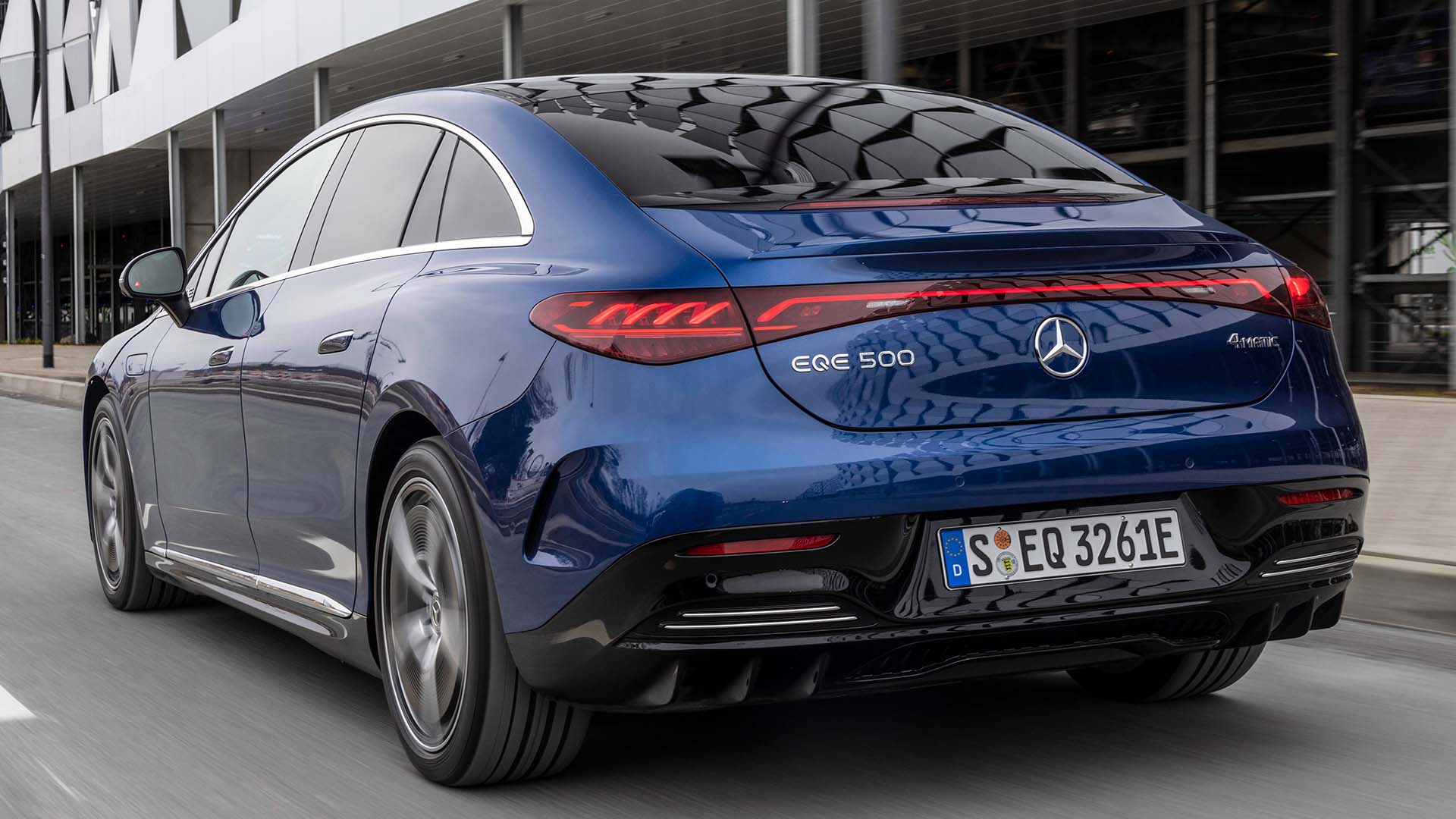 In our handling course, the EQE delivered a very unique experience as its optional rear axle steering provides an extreme 10-degrees of turning, which translated to very little input needed to the steering wheel to change direction quickly. And while that hyper responsiveness took some getting used to, the minimal body roll and overall well-balanced nature were much appreciated. And needless to say, whipping in and out of parking spots is a breeze.
In our handling course, the EQE delivered a very unique experience as its optional rear axle steering provides an extreme 10-degrees of turning, which translated to very little input needed to the steering wheel to change direction quickly. And while that hyper responsiveness took some getting used to, the minimal body roll and overall well-balanced nature were much appreciated. And needless to say, whipping in and out of parking spots is a breeze.
While the EQE shares the same basic one-bow, cab-forward shape of the EQS, the smaller size makes for a bit less of an elegant profile. Still very futuristic looking however, with a smooth face and wheelbase stretched to the max. Pricing starts at $76,050 for the rear-drive 350+, with the top 500 4MATIC beginning at $87,050.
While it doesn’t have quite the presence or panache of the full-size EQS, the 2023 Mercedes-EQE Sedan does a great job of bringing plenty of the flagship flair down to a more attainable level. Making it not only a great luxury sedan, but an even better EV.
2024 Honda Ridgeline TrailSport
It Does Truck-Like Things Better Than Ever
Honda brought something truly unique to the pickup truck scene when their mid-size Ridgeline debuted for 2006. In 2017, it moved towards becoming a little more true truck-like, both in form and capability, now with yet another step in that direction for 2024. So, let’s see if the Ridgeline is really hitting its stride.
For 2024, it’s all about making this Honda Ridgeline better than ever. There are styling tweaks outside, along with tech and functional improvements inside, but the biggest news is the Ridgeline has now joined Honda’s TrailSport family of off-road inspired vehicles. This more-true-trucklike, second-gen Ridgeline been around since 2017, receiving periodic updates over the years; but joining the TrailSport family is the biggest leap yet.
Primarily, the TrailSport transformation includes General Grabber all-terrain tires, mounted on new Pewter Gray 18-inch wheels, steel underbody protection, and retuning the strut front, and multi-link rear suspension for added wheel articulation. And while we always appreciate the additional traction of off-road tires, the Ridgeline’s standard i-VTM4 all-wheel drive, with Intelligent Traction Management and snow, sand, and mud settings, was already quite capable of handling all but the most extreme off-roading, ground clearance of just 7.6 inches being it’s only real hinderance.
A 3.5-liter V6 remains under the hood as it has since the Ridgeline debuted for 2006; the current version outputs 280 horsepower and 262 lb-ft of torque, plenty enough muscle to handle its 5,000-lbs. towing capacity. A nine-speed automatic transmission with paddle shifters and bevy of push and pull buttons on the console replaced the six-speed automatic back in 2020.
In addition to adding TrailSport capability, a big focus for this update was making it more user-friendly inside, starting with the central touchscreen growing from 8 to 9 inches. It also gets faster processing speeds, menus have been simplified, and the native navigation system is improved with better graphics. It’s accompanied by a new digital instrument cluster, along with an upgraded center console with more storage space. Unique TrailSport touches include heavy duty floormats, leather-trimmed seats, orange stitching throughout the cabin, and orange ambient lighting.
The Ridgeline continues to offer things available nowhere else in the pickup truck market.
Exterior styling doesn’t exactly shout “macho big rig coming your way,” but the more vertical face and larger grille that arrived for 2021, along with this year’s added TrailSport elements, do continue to toughen up the Ridgeline’s image. The 5’4” bed remains highly functional with no large wheel well intrusions, multiple tie-downs points, lighting and even speakers. And of course, the Ridgeline continues to offer things available nowhere else in the pickup truck market, like the dual-action tailgate, and large, lockable, drainable, underbed storage. Not to mention being able to drive around in true car-like comfort, something we took full advantage of on our way to our Mason Dixon Dragway test track.
There was great grip off the line, with full power arriving smoothly but quickly, helping us to get to 60 in 7.0 seconds flat, a tenth quicker than the last Ridgeline we tested. That power delivery stayed fairly consistent the whole way down the track, barely interrupted by the nine-speed automatic’s smooth shifting. Our best quarter-mile run was 15.5 seconds at 90 mph.
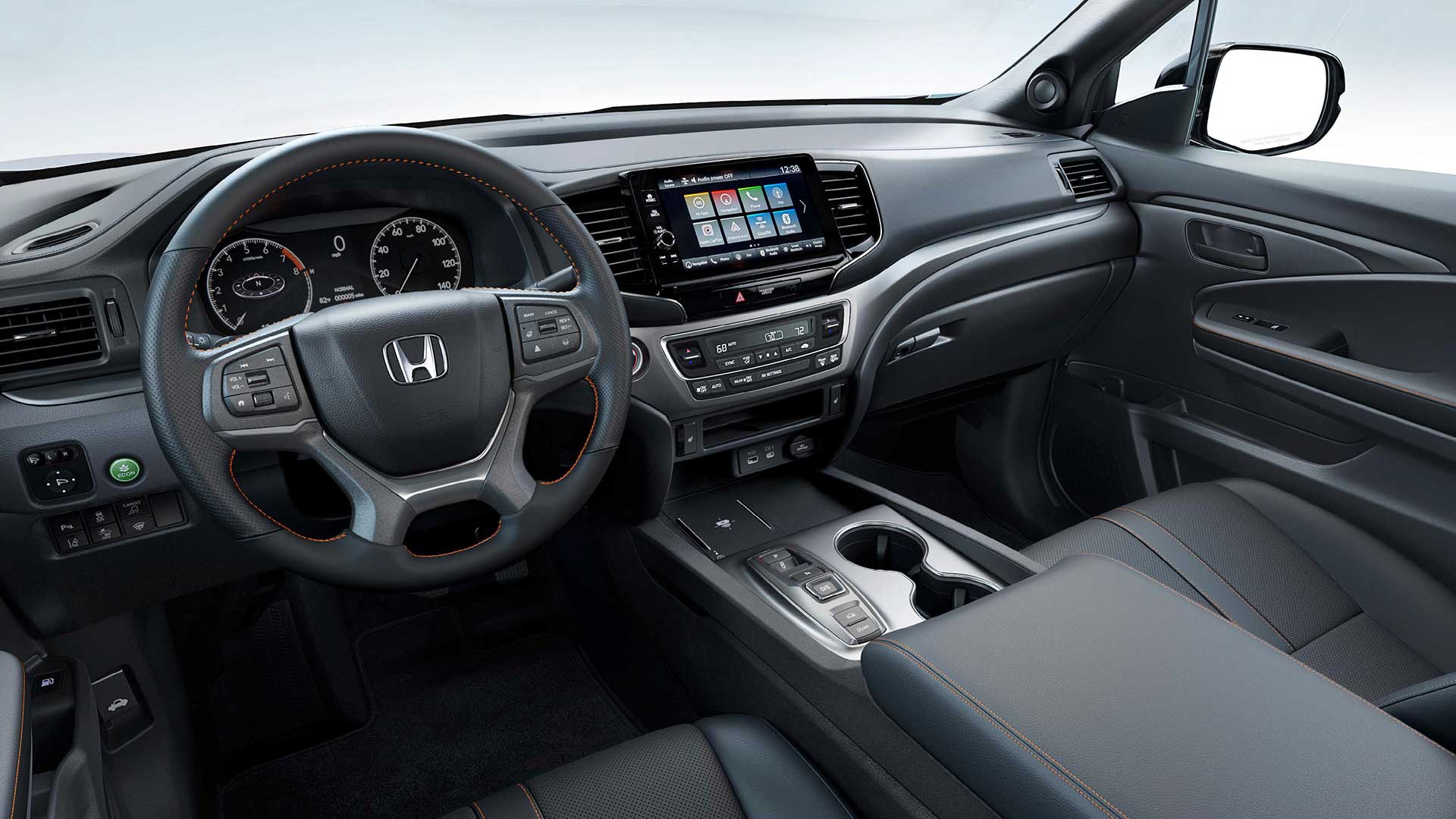
The revised suspension and knobbier tires didn’t really seem to add or detract from handling prowess, as it felt as solid, nimble, and car-like as it always has through our cone course. Perhaps a little less stiff than before, but good feedback, tight steering, and minimal body roll for a pickup, made for a very confidence inspiring experience. In our braking test, we stopped in a respectable average of 123 feet from 60, with only moderate amounts of nosedive and good feel through the pedal.
There is, however, a slight reduction in Government Fuel Economy Ratings with the all-terrain tires; 18-City, 23-Highway, and 20-Combined, our average, right on, at 20.4 mpg of Regular. That’s a slightly below average Energy Impact Score of 14.9 barrels of yearly oil use, with CO2 emissions of 7.4 tons.
TrailSport pricing falls in line just under the Ridgeline’s top Black Edition trim with a starting price of $46,375, about five grand over a base Ridgeline Sport.
So, whether you consider the Honda Ridgeline to be a “real” truck or not, this ruggedly smooth 2024 TrailSport does truck-like things better than ever. And we’re not just talking about the slight upgrade in off-road performance, we’re talking about a flexible bed to help you get chores done, and the ability to tow or haul with comfort and flexibility other trucks can only wish for. It’s why the Ridgeline brings more first-time buyers to Honda than any other vehicle, and why it continues to be a great choice in the growing midsize truck realm.
Specifications
- Engine: 3.5-liter V6
- Transmission: 9-speed automatic
- Horsepower: 280
- Torque: 262 lb-ft
- EPA: 18 City | 23 Highway | 20 Combined
- 0-60 mph: 7.0 seconds
- 1/4 Mile: 15.5 seconds at 90 mph
- 60-0 Braking (avg): 123 feet
- MW Fuel Economy: 20.4 mpg (Regular)
- Max Towing Capacity: 5,000-lbs




